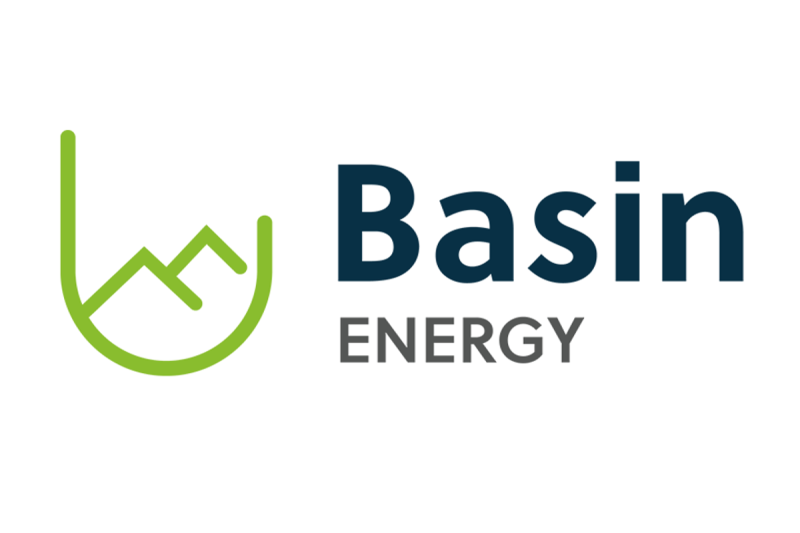
 Basin Energy (BSN:AU) has announced Queensland Uranium and Rare Earth Acquisition Completed
Basin Energy (BSN:AU) has announced Queensland Uranium and Rare Earth Acquisition Completed
Download the PDF here.

 Basin Energy (BSN:AU) has announced Queensland Uranium and Rare Earth Acquisition Completed
Basin Energy (BSN:AU) has announced Queensland Uranium and Rare Earth Acquisition Completed
Download the PDF here.


/NOT FOR DISTRIBUTION TO U.S. NEWSWIRE SERVICES OR FOR RELEASE, PUBLICATION, DISTRIBUTION OR DISSEMINATION DIRECTLY, OR INDIRECTLY, IN WHOLE OR IN PART, IN OR INTO THE UNITED STATES./
Quimbaya Gold Inc. (‘Quimbaya’ or the ‘Company’) (CSE: QIM,OTC:QIMGF) (OTCQB: QIMGF) (FSE: K05) is pleased to announce that it has entered into an agreement with Stifel Canada to act as sole underwriter and bookrunner (the ‘Underwriter’), in connection with a ‘bought deal’ private placement of 14,300,000 units of the Company (the ‘LIFE Units’) at a price of C$0.70 per LIFE Unit (the ‘Offering Price’) for aggregate gross proceeds of C$10,010,000 (the ‘Offering’), with the LIFE Units to be issued pursuant to the Listed Issuer Financing Exemption (as defined below).
The Company has granted to the Underwriter an option, exercisable up to 48 hours prior to the closing date, to purchase for resale up to an additional 15% of LIFE Units at the Offering Price for additional gross proceeds of up to C$1,501,500.
Each LIFE Unit will consist of one common share (a ‘Common Share‘) and one-half (½) of one Common Share purchase warrant (each whole warrant, a ‘Warrant‘) of the Company. Each Warrant will be exercisable to acquire one Common Share for a period of 36 months following the closing date of the Offering at an exercise price of C$1.00 per common share.
The net proceeds from the Offering are expected to be used to advance the Company’s exploration programs, including drilling at the Tahami South project and follow-up work on regional copper-gold and gold targets, as well as for general working capital.
Subject to compliance with applicable regulatory requirements and in accordance with National Instrument 45-106 – Prospectus Exemptions (‘NI 45-106‘), the LIFE Units will be offered for sale to purchasers resident in Canada other than Quebec and/or other qualifying jurisdictions pursuant to the listed issuer financing exemption under Part 5A of NI 45-106 (the ‘Listed Issuer Financing Exemption‘). Because the Offering is being completed pursuant to the Listed Issuer Financing Exemption, the LIFE Units issued pursuant to the Offering will not be subject to a hold period pursuant to applicable Canadian securities laws. There is an offering document related to the Offering that can be accessed under the Company’s issuer profile on SEDAR+ at www.sedarplus.ca and on the Company’s website at quimbayagold.com. Prospective investors should read the offering document before making an investment decision.
The Offering is scheduled to close on or about November 4, 2025 (the ‘Closing Date‘) and is subject to certain conditions including, but not limited to, the receipt of all necessary regulatory and other approvals including the acceptance of the Canadian Securities Exchange.
The securities referred to in this news release have not been and will not be registered under the United States Securities Act of 1933, as amended (the ‘U.S. Securities Act‘), or any state securities laws and may not be offered or sold within the United States or to, or for the account or benefit of, ‘U.S. Persons’ (as such term is defined in Regulation S under the U.S. Securities Act) absent such registration or an applicable exemption from the registration requirements of the U.S. Securities Act. This news release does not constitute an offer for sale of securities for sale, nor a solicitation for offers to buy any securities. Any public offering of securities in the United States must be made by means of a prospectus containing detailed information about the company and management, as well as financial statements.
About Quimbaya
Quimbaya aims to discover gold resources through exploration and acquisition of mining properties in the prolific gold mining districts of Colombia. Managed by an experienced team in the mining sector, Quimbaya is focused on three projects in the regions of Segovia (Tahami Project), Puerto Berrio (Berrio Project), and Abejorral (Maitamac Project), all located in Antioquia Province, Colombia.
Quimbaya Gold Inc.
Follow on X @quimbayagoldinc
Follow on LinkedIn @quimbayagold
Follow on YouTube @quimbayagoldinc
Follow on Instagram @quimbayagoldinc
Follow on Facebook @quimbayagoldinc
Cautionary Statements
Certain statements contained in this press release constitute ‘forward-looking information’ as that term is defined in applicable Canadian securities legislation. All statements, other than statements of historical fact, included herein are forward-looking information. Generally, but not always, forward-looking statements and information can be identified by the use of forward-looking terminology such as ‘intends’, ‘expects’ or ‘anticipates’, or variations of such words and phrases or statements that certain actions, events or results ‘may’, ‘could’, ‘should’, ‘would’ or ‘occur’. Forward-looking statements herein include statements and information regarding the closing of the Offering, Offering’s intended use of proceeds, any exercise of Warrants, the future plans for the Company, including any expectations of growth or market momentum, future expectations for the gold sector generally, the Colombian gold sector more particularly, or how global or local market trends may affect the Company, intended exploration on any of the Company’s properties and any results thereof, the strength of the Company’s mineral property portfolio, the potential discovery and potential size of the discovery of minerals on any property of the Company’s, including Tahami South, the aims and goals of the Company, and other forward-looking information. Forward-looking information by its nature is based on assumptions and involves known and unknown risks, uncertainties and other factors which may cause the actual results, performance or achievements of Quimbaya to be materially different from any future results, performance or achievements expressed or implied by such forward-looking statements or information. These assumptions include, but are not limited to, that the Company’s exploration and other activities will proceed as expected. The future outcomes that relate to forward-looking statements may be influenced by many factors, including but not limited to: future planned development and other activities on the Company’s mineral properties; an inability to finance the Company; obtaining required permitting on the Company’s mineral properties in a timely manner; any adverse changes to the planned operations of the Company’s mineral properties; failure by the Company for any reason to undertake expected exploration programs; achieving and maintaining favourable relationships with local communities; mineral exploration results that are poorer or better than expected; prices for gold remaining as expected; currency exchange rates remaining as expected; availability of funds for the Company’s projects; prices for energy inputs, labour, materials, supplies and services (including transportation); no labour-related disruptions; no unplanned delays or interruptions in scheduled construction and production; all necessary permits, licenses and regulatory approvals are received in a timely manner; the Offering proceeds being received as anticipated; all requisite regulatory and stock exchange approvals for the Offering are obtained in a timely fashion; investor participation in the Offering; and the Company’s ability to comply with environmental, health and safety laws. Although Quimbaya’s management believes that the assumptions made and the expectations represented by such information are reasonable, there can be no assurance that the forward-looking information will prove to be accurate. Furthermore, should one or more of the risks, uncertainties or other factors materialize, or should underlying assumptions prove incorrect, actual results may vary materially from those described in forward-looking statements or information. Readers are cautioned not to place undue reliance on forward-looking information as there can be no assurance that the plans, intentions or expectations upon which they are placed will occur. Forward-looking information contained in this news release is expressly qualified by this cautionary statement. The forward-looking information contained in this news release represents the expectations of Quimbaya as of the date of this news release and, accordingly, is subject to change after such date. Except as required by law, Quimbaya does not expect to update forward-looking statements and information continually as conditions change.
SOURCE Quimbaya Gold Inc.

![]() View original content: http://www.newswire.ca/en/releases/archive/October2025/23/c7762.html
View original content: http://www.newswire.ca/en/releases/archive/October2025/23/c7762.html
News Provided by Canada Newswire via QuoteMedia


Sun Summit Minerals Corp. (TSXV: SMN,OTC:SMREF) (OTCQB: SMREF) (‘Sun Summit’ or the ‘Company’) is pleased to announce that it will be attending and presenting at the 51st Annual New Orleans Investment Conference, taking place November 2–5, 2025 at the Hilton New Orleans Riverside.
Niel Marotta, CEO and Director, will host a Sunrise Session presentation on Tuesday, November 4 at 7:15 AM (Churchill B2), where he will share updates on the Company’s flagship JD Project in British Columbia’s Toodoggone District, following the completion of a successful 2025 exploration season.
Space is limited. Investors are invited to RSVP by October 31 to info@sunsummitminerals.com, and to visit Sun Summit at Booth #229 throughout the conference.
The New Orleans Investment Conference brings together leading analysts, newsletter writers, and investors to discuss emerging opportunities across all major asset classes. Register today at https://neworleansconference.com/online-registration/.
About the JD Project
The JD Project is located in the Toodoggone mining district in north-central British Columbia, a highly prospective deposit-rich mineral trend. The project covers an area of over 15,000 hectares and is in close proximity to active exploration and development projects, such as Thesis Gold’s Lawyers and Ranch projects, TDG Gold’s Baker-Shasta projects, Amarc Resource’s AuRORA project, Centerra’s Gold’s Kemess East and Underground projects, as well as the past-producing Kemess open pit copper-gold mine.
The project is 450 kilometres northwest of the city of Prince George, and 25 kilometres north of the Sturdee airstrip. It is proximal to existing infrastructure in place to support the past-producing Kemess mine, including roads and a hydroelectric power line.
The JD Project is in a favourable geological environment characterized by both high-grade epithermal gold and silver mineralization, as well as porphyry-related copper and gold mineralization. Some historical exploration, including drilling, geochemistry and geophysics, has been carried out on the property, however the project area is largely underexplored.
About Sun Summit
Sun Summit Minerals (TSXV: SMN,OTC:SMREF) (OTCQB: SMREF) is a mineral exploration company focused on the discovery, expansion and advancement of district-scale gold and copper assets in British Columbia. The Company’s diverse portfolio includes its flagship JD Project and the nearby Theory Project in the Toodoggone region of north-central B.C., as well as the Buck Project in central B.C.
Further details are available at www.sunsummitminerals.com.
On behalf of the board of directors
Niel Marotta
Chief Executive Officer & Director
info@sunsummitminerals.com
For further information, contact:
Matthew Benedetto, Simone Capital
mbenedetto@simonecapital.ca
Tel. 416-817-1226
Neither the TSX Venture Exchange nor its Regulation Services Provider (as that term is defined in the policies of the TSX Venture Exchange) accepts responsibility for the adequacy or accuracy of this release.
Forward-Looking Statements
Statements contained in this news release that are not historical in nature may be ‘forward-looking information’ within the meaning of applicable Canadian securities legislation (‘forward-looking statements ‘), which involve risks, uncertainties and other factors that could cause actual results to differ materially from those expressed or implied by such forward-looking statements. These forward-looking statements, by their nature, require Sun Summit to make certain assumptions and necessarily involve known and unknown risks and uncertainties that could cause actual results to differ materially from those expressed or implied in these forward-looking statements. Forward-looking statements are not guarantees of performance. Words such as ‘may’, ‘will’, ‘would’, ‘could’, ‘expect’, ‘believe’, ‘plan’, ‘anticipate’, ‘intend’, ‘estimate’, ‘continue’, ‘objective’, ‘strategy’, or the negative or comparable terminology, as well as terms usually used in the future and the conditional, are intended to identify forward-looking statements. Information contained in forward-looking statements is based upon certain material assumptions that were applied in drawing a conclusion or making a forecast or projection, including the assumptions, qualifications, limitations or statements relating to the pending results of the drill holes, the success of the exploration program, the impressive results of the drill campaign, the ability of exploration activities (including drilling) to accurately predict mineralization, future drill programs and high-priority targets, our timing and ability to receive assay results, the reliability of historical information that cannot be independently verified by Sun Summit, interests in the JD Project, errors in geological modelling, and the adjacent properties having any significance to the projects in which Sun Summit has an interest. There is significant risk that the forward-looking statements will not prove to be accurate, that the management’s assumptions may not be correct and that actual results may differ materially from such forward-looking statements. These forward-looking statements are based on a number of assumptions which may prove to be incorrect which, without limiting the generality of the following, include: the Company’s ability to obtain assay results for the completed drill program; the anticipated results varying from current indications, including the already released drill results; risks inherent in exploration activities; volatility and sensitivity to market prices; volatility and sensitivity to capital market fluctuations; and fluctuations in metal prices. Accordingly, readers should not place undue reliance on the forward-looking statements. The forward-looking statements contained in this news release are made as of the date hereof or the dates specifically referenced in this news release, where applicable. Except as required by applicable securities laws and regulation, Sun Summit disclaims any intention or obligation to update or revise any forward-looking statement, whether as a result of new information, future events or otherwise, except as required by applicable securities laws. All forward-looking statements contained in this news release are expressly qualified by this cautionary statement.
To view the source version of this press release, please visit https://www.newsfilecorp.com/release/271649

News Provided by Newsfile via QuoteMedia
![]()
A newly released State of CleanAI report from the Toronto-based CleanAI Initiative delivers a compelling snapshot of a sector quietly revolutionizing the clean economy transition. This sector is the application of artificial intelligence (AI) to climate solutions, collectively known as cleanAI.
The report points to a niche subsector that merges AI and sustainability moving rapidly from niche to mainstream, with venture capital funding surpassing US$50 billion since 2020.
This milestone is particularly notable given that the broader cleantech sector has experienced a slowdown. Instead, cleanAI shows robust growth, accounting for 10 percent of global AI venture funding.
The United States leads by a significant margin, accounting for roughly 60 percent of total investments at over US$30 billion during the time measured. Sweden, Germany, China and Canada follow with investment totals ranging between US$2 billion and US$5 billion.
For Canadian investors and innovators, cleanAI represents a substantial area of growth, with over 155 deals to date indicating a vibrant and expanding market.
The forecast is equally optimistic. CleanAI investments are on pace to surpass US$60 billion by 2026, signaling increasing investor confidence in AI’s role as a force multiplier for climate action. These markets represent multi-trillion-dollar opportunities extending over decades, where AI not only facilitates efficiencies but can also unlock entirely new pathways for sustainability.
The report identifies six main cleanAI application sectors:
The report found that energy and power technologies dominate, garnering about 51 percent of total cleanAI investments year-to-date in 2025, driven by pressing decarbonization needs and the maturity of AI-enabled grid and energy solutions.
Materials and chemicals applications represent the fastest-growing portion of the investment pie, capturing investor interest through advancements in industrial efficiency and materials science enhanced by AI.
The report notes that 2025 has already been marked by several mega-deals, particularly in energy, power and materials chemicals.
Conversely, agriculture and food have seen a decline from their 2021 peak in funding, while the waste and recycling segment is just beginning to attract meaningful venture capital.
Notably, about 30 percent of investors participating in these rounds are corporate venture capital arms, such as Toshiba (TYO:6502), Mitsubishi (OTC Pink:MIMTF) and Samsung (HKEX:2814).
Despite the progress, the report highlights several challenges for scaling cleanAI. A top concern is the increasing energy consumption of AI technologies themselves, which could counteract their climate benefits if not managed carefully.
However, the potential net gains from AI-driven efficiency improvements across sectors suggest the overall climate impact of cleanAI remains very positive.
Another major barrier is “siloed expertise”, meaning that few investors and innovators possess the combined skill set that marries deep AI knowledge with climate science. The authors note tht this limits capital flows and impedes cross-domain collaboration, underlining the need for integrated approaches to innovation in this space.
The rapid evolution of AI tools adds complexity to the cleanAI market, making strategic insight and careful navigation essential for investors and companies alike.
The CleanAI Initiative’s report portrays a sector at a point where momentum from venture capital, corporate partnerships, and technology converge to accelerate the transition to a clean economy.
For investors, cleanAI offers multi-layered opportunities, from early-stage startups to corporate venture capital targeting strategic growth. The multi-trillion-dollar markets implicated suggest that CleanAI could continue to be a critical component of investment strategies focused on sustainability and technology leadership.
For investors seeking to align returns with impact, cleanAI offers a compelling and increasingly accessible frontier.
Securities Disclosure: I, Meagen Seatter, hold no direct investment interest in any company mentioned in this article.
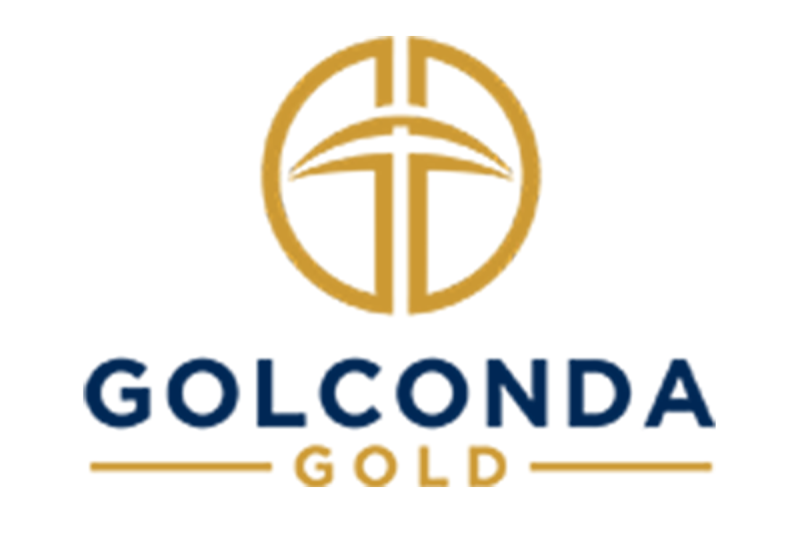
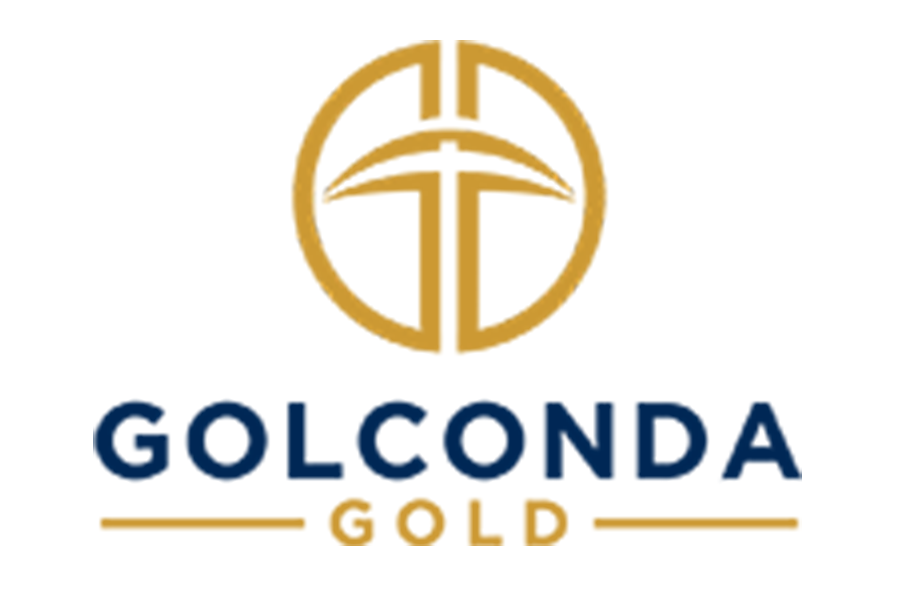
Gold is making a powerful comeback as a cornerstone of the global financial system—but it’s not alone. Digital assets and cryptocurrencies are rapidly transforming how capital moves across markets. Instead of competing, gold and crypto are increasingly converging, opening new opportunities for investors and reshaping the future of money.
Highlights:
Don’t miss this chance to understand the forces shaping the future of money—and position your investments ahead of the next global shift.
Click here to register for the webinar
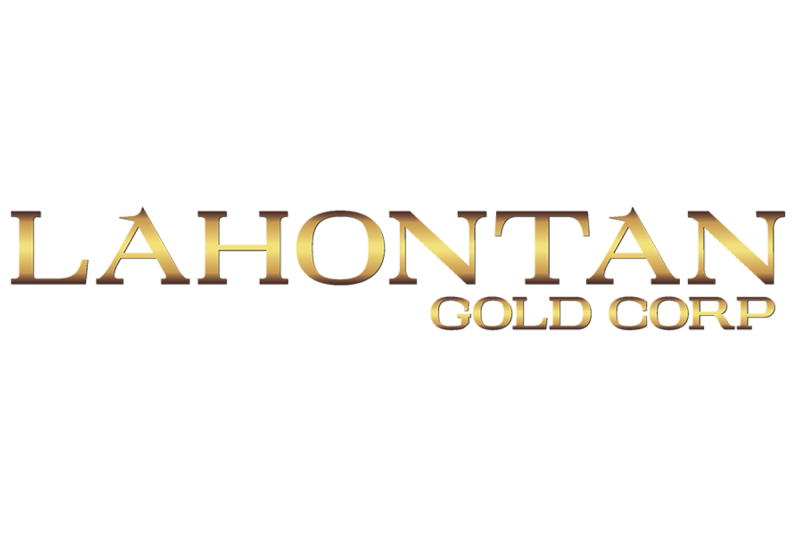
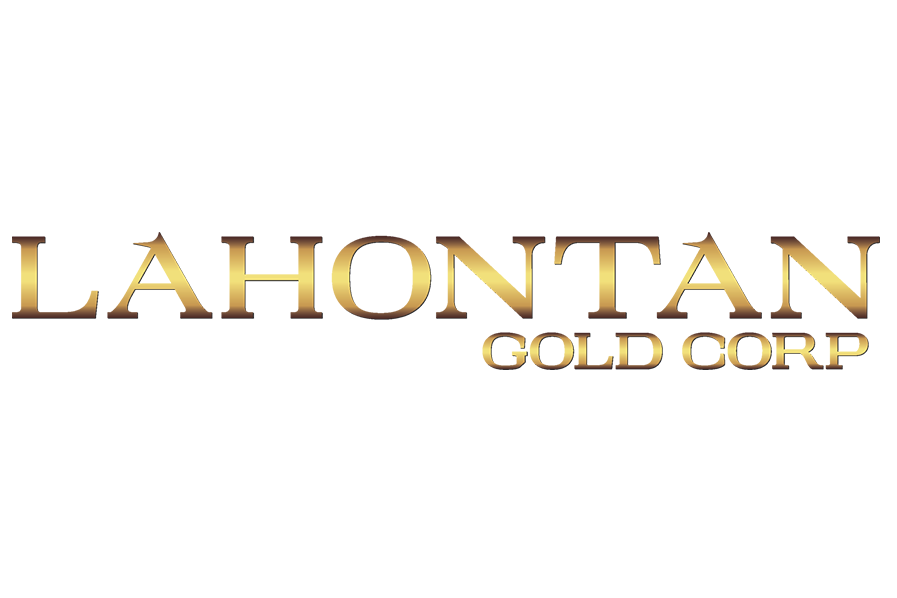
Lahontan Gold Corp. (TSXV:LG)(OTCQB:LGCXF)(FSE:Y2F) (the ‘Company’ or ‘Lahontan’) is pleased to announce that the Company has completed the Purchase (the ‘Purchase‘) of 27 unpatented lode mining claims (the ‘York claims‘) from Emergent Metals Corp (‘Emergent‘). The York claims are contiguous with the southeast corner of the Santa Fe Mine Project and provide a compelling opportunity to significantly expand oxide gold and silver mineral resources previously defined at the York deposit*. Modeling of drill data during the mineral resource estimation process suggests that gold and silver mineralization likely extends onto the York claims. This targeting concept was in part validated by Lahontan’s recent drilling campaign where reverse-circulation drill hole YOR25-001R cut 89.9 metres (45.7 – 135.6m) grading 0.23 g/t gold (please see Lahontan Gold News Release dated September 2, 2025). The Company is currently planning additional drilling at the York target area for this Fall. With the addition of the York claims, the Company now owns or controls 415 unpatented lode mining claims, 67 unpatented millsite claims, and 24 patented lode mining claims encompassing over 2,832 ha or 28.3 km2 of mineral rights in one of the World’s premier gold belts: Nevada’s Walker Lane.
Kimberly Ann, Lahontan Founder, Chair, CEO, and President commented: ‘Lahontan is excited to have completed the Purchase of the York claims. The gold and silver resource expansion potential, combined with the ability to further layback the York pit in potential future mining operations, makes the Purchase a strategic acquisition for the Company. Lahontan now controls a district-scale land package that, despite prolific past production and the completion of over 1,200 drill holes, remains largely unexplored with multiple targets for resource expansion and new discoveries.’
Terms of the Purchase include:
About Lahontan Gold Corp.
Lahontan Gold Corp. is a Canadian mine development and mineral exploration company that holds, through its US subsidiaries, four top-tier gold and silver exploration properties in the Walker Lane of mining friendly Nevada. Lahontan’s flagship property, the 28.3 km2 Santa Fe Mine project, had past production of 359,202 ounces of gold and 702,067 ounces of silver between 1988 and 1995 from open pit mines utilizing heap-leach processing. The Santa Fe Mine has a Canadian National Instrument 43-101 compliant Indicated Mineral Resource of 1,539,000 oz Au Eq(48,393,000 tonnes grading 0.92 g/t Au and 7.18 g/t Ag, together grading 0.99 g/t Au Eq) and an Inferred Mineral Resource of 411,000 oz Au Eq (16,760,000 grading 0.74 g/t Au and 3.25 g/t Ag, together grading 0.76 g/t Au Eq), all pit constrained (Au Eq is inclusive of recovery, please see Santa Fe Project Technical Report and note below*). The Company plans to continue advancing the Santa Fe Mine project towards production, update the Santa Fe Preliminary Economic Assessment, and drill test its satellite West Santa Fe project during 2025. For more information, please visit our website: www.lahontangoldcorp.com
* Please see the ‘Preliminary Economic Assessment, NI 43-101 Technical Report, Santa Fe Project’, Authors: Kenji Umeno, P. Eng., Thomas Dyer, PE, Kyle Murphy, PE, Trevor Rabb, P. Geo, Darcy Baker, PhD, P. Geo., and John M. Young, SME-RM; Effective Date: December 10, 2024, Report Date: January 24, 2025. The Technical Report is available on the Company’s website and SEDAR+. Mineral resources are reported using a cut-off grade of 0.15 g/t AuEq for oxide resources and 0.60 g/t AuEq for non-oxide resources. AuEq for the purpose of cut-off grade and reporting the Mineral Resources is based on the following assumptions gold price of US$1,950/oz gold, silver price of US$23.50/oz silver, and oxide gold recoveries ranging from 28% to 79%, oxide silver recoveries ranging from 8% to 30%, and non-oxide gold and silver recoveries of 71%.
Qualified Person
Brian J. Maher, M.Sc., CPG-12342, is a ‘Qualified Person’ as defined under Canadian National Instrument 43-101, Standards of Disclosure for Mineral Projects, and has reviewed and approved the content of this news release in respect of all disclosure other than the Mineral Resource Estimate as noted above. Mr. Maher is Vice President-Exploration for Lahontan Gold and has verified the data disclosed in this news release, including the sampling, analytical and test data underlying the disclosure.
On behalf of the Board of Directors
Kimberly Ann
Founder, CEO, President, and Executive Chair
FOR FURTHER INFORMATION, PLEASE CONTACT:
Lahontan Gold Corp.
Kimberly Ann
Founder, Chief Executive Officer, President, and Executive Chair
Phone: 1-530-414-4400
Email: Kimberly.ann@lahontangoldcorp.com
Website: www.lahontangoldcorp.com
Cautionary Note Regarding Forward-Looking Statements:
Neither TSX Venture Exchange(‘TSXV’) nor its Regulation Services Provider (as that term is defined in policies of the TSX Venture Exchange) accepts responsibility for the adequacy or accuracy of this release. Except for statements of historical fact, this news release contains certain ‘forward-looking information’ within the meaning of applicable securities law. Forward-looking information is frequently characterized by words such as ‘plan’, ‘expect’, ‘project’, ‘intend’, ‘believe’, ‘anticipate’, ‘estimate’ and other similar words, or statements that certain events or conditions ‘may’ or ‘will’ occur. Forward-looking statements are based on the opinions and estimates at the date the statements are made and are subject to a variety of risks and uncertainties and other factors that could cause actual events or results to differ materially from those anticipated in the forward-looking statements including, but not limited to delays or uncertainties with regulatory approvals, including that of the TSXV. There are uncertainties inherent in forward-looking information, including factors beyond the Company’s control. The Company undertakes no obligation to update forward-looking information if circumstances or management’s estimates or opinions should change except as required by law. The reader is cautioned not to place undue reliance on forward-looking statements. Additional information identifying risks and uncertainties that could affect financial results is contained in the Company’s filings with Canadian securities regulators, which filings are available at www.sedarplus.com.
Click here to connect with Lahontan Gold (TSXV:LG,OTCQB:LGCXF) to receive an Investor Presentation
Source


Company claims 7,637 hectares of new concessions adjacent to its flagship Tahami Project and Aris Mining operation in Segovia, increasing the project footprint from 17,087 to 24,724 hectares and building on recent fieldwork success
Quimbaya Gold Inc. (CSE: QIM,OTC:QIMGF) (OTCQB: QIMGF) (FSE: K05) (‘Quimbaya’ or the ‘Company’) is pleased to announce that it has successfully claimed six new mineral concessions totaling 7,637 hectares, strategically expanding its land position within the Segovia gold district of Antioquia, Colombia. The new claims are contiguous with both the Company’s flagship Tahami Project and properties held by Aris Mining, strengthening Quimbaya’s presence in Segovia.
TECHNICAL FACTS SECTION:
The concessions claimed include the following applications:
These areas were prioritized following detailed structural interpretation, surface mapping of existing claims, and geochemical sampling on the existing Tahami Project that support the thesis of the continuation of gold-bearing systems across the district.
Alexandre P. Boivin, President and CEO, commented:
‘As a well-established player in Colombia, Quimbaya understands how to build a coherent and strategic exploration portfolio. This latest expansion is a natural continuation of our technical work on the ground and reinforces our long-term commitment to value creation through disciplined land positioning.’
Ricardo Sierra, VP Exploration, commented:
‘The additional ground provides valuable extensions to areas we have been actively exploring. Based on preliminary geological observations and our structural interpretation of the district, we see strong potential for continuity of mineralized systems within these newly claimed areas. These claims are an important step as we broaden our exploration focus across the Tahami Project.’
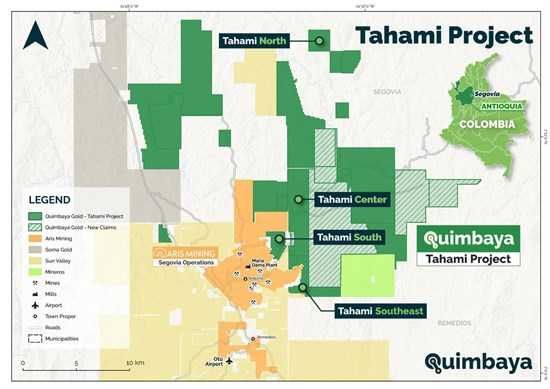
Figure 1
To view an enhanced version of this graphic, please visit:
https://images.newsfilecorp.com/files/11347/271628_cc6f7404f460696b_001full.jpg
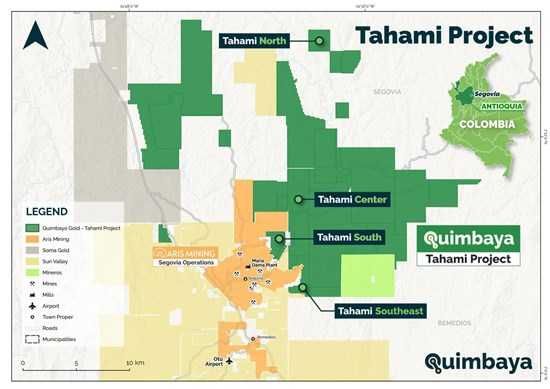
Figure 2
To view an enhanced version of this graphic, please visit:
https://images.newsfilecorp.com/files/11347/271628_cc6f7404f460696b_002full.jpg
STRATEGIC POSITIONING
The expansion brings Quimbaya’s total land holdings at Tahami to 24,724 significantly enhancing the project’s scale and continuity. The new claims align with known mineralized corridors related to the Segovia vein system and emerging porphyry targets. This additional footprint allows the Company to better control district-scale exploration while maintaining proximity to high-grade production centers.
The Company will continue to refine its regional targeting and prioritize areas for follow-up work in Q4 2025. This expansion aligns with Quimbaya’s broader strategy of building a high-impact, district-scale portfolio within Colombia’s most prolific gold regions.
Qualified Person
The information in this report that relates to Interpretation results and observations is based on information reviewed by Mr. Ricardo Sierra, a Competent Person who is a member of the Australian Institute of Mining and Metallurgy (AusIMM), and a Qualified Person as defined by National Instrument 43-101. Ricardo Sierra consents to the inclusion of Exploration Results based on the information and in the form and context in which it appears.
About Quimbaya
Quimbaya aims to discover gold resources through exploration and acquisition of mining properties in the prolific gold mining districts of Colombia. Managed by an experienced team in the mining sector, Quimbaya is focused on three projects in the regions of Segovia (Tahami Project), Puerto Berrio (Berrio Project), and Abejorral (Maitamac Project), all located in Antioquia Province, Colombia.
Contact Information
Alexandre P. Boivin, President and CEO apboivin@quimbayagold.com
Sebastian Wahl, VP Corporate Development swahl@quimbayagold.com
Quimbaya Gold Inc.
Follow on X @quimbayagoldinc
Follow on LinkedIn @quimbayagold
Follow on YouTube @quimbayagoldinc
Follow on Instagram @quimbayagoldinc
Follow on Facebook @quimbayagoldinc
Cautionary Statements
Certain statements contained in this press release constitute ‘forward-looking information’ as that term is defined in applicable Canadian securities legislation. All statements, other than statements of historical fact, included herein are forward-looking information. Generally, but not always, forward-looking statements and information can be identified by the use of forward-looking terminology such as ‘intends’, ‘expects’ or ‘anticipates’, or variations of such words and phrases or statements that certain actions, events or results ‘may’, ‘could’, ‘should’, ‘would’ or ‘occur’. Forward-looking statements herein include statements and information regarding the Offering’s intended use of proceeds, any exercise of Warrants, the future plans for the Company, including any expectations of growth or market momentum, future expectations for the gold sector generally, the Colombian gold sector more particularly, or how global or local market trends may affect the Company, intended exploration on any of the Company’s properties and any results thereof, the strength of the Company’s mineral property portfolio, the potential discovery and potential size of the discovery of minerals on any property of the Company’s, including Tahami South, the aims and goals of the Company, and other forward-looking information. Forward-looking information by its nature is based on assumptions and involves known and unknown risks, uncertainties and other factors which may cause the actual results, performance or achievements of Quimbaya to be materially different from any future results, performance or achievements expressed or implied by such forward-looking statements or information. These assumptions include, but are not limited to, that the Company’s exploration and other activities will proceed as expected. The future outcomes that relate to forward-looking statements may be influenced by many factors, including but not limited to: future planned development and other activities on the Company’s mineral properties; an inability to finance the Company; obtaining required permitting on the Company’s mineral properties in a timely manner; any adverse changes to the planned operations of the Company’s mineral properties; failure by the Company for any reason to undertake expected exploration programs; achieving and maintaining favourable relationships with local communities; mineral exploration results that are poorer or better than expected; prices for gold remaining as expected; currency exchange rates remaining as expected; availability of funds for the Company’s projects; prices for energy inputs, labour, materials, supplies and services (including transportation); no labour-related disruptions; no unplanned delays or interruptions in scheduled construction and production; all necessary permits, licenses and regulatory approvals are received in a timely manner; the Offering proceeds being received as anticipated; all requisite regulatory and stock exchange approvals for the Offering are obtained in a timely fashion; investor participation in the Offering; and the Company’s ability to comply with environmental, health and safety laws. Although Quimbaya’s management believes that the assumptions made and the expectations represented by such information are reasonable, there can be no assurance that the forward-looking information will prove to be accurate. Furthermore, should one or more of the risks, uncertainties or other factors materialize, or should underlying assumptions prove incorrect, actual results may vary materially from those described in forward-looking statements or information. Readers are cautioned not to place undue reliance on forward-looking information as there can be no assurance that the plans, intentions or expectations upon which they are placed will occur. Forward-looking information contained in this news release is expressly qualified by this cautionary statement. The forward-looking information contained in this news release represents the expectations of Quimbaya as of the date of this news release and, accordingly, is subject to change after such date. Except as required by law, Quimbaya does not expect to update forward-looking statements and information continually as conditions change.
NOT FOR DISTRIBUTION TO UNITED STATES NEWS WIRE SERVICES OR FOR DISSEMINATION IN THE UNITED STATES

To view the source version of this press release, please visit https://www.newsfilecorp.com/release/271628

News Provided by Newsfile via QuoteMedia

North Shore Uranium Ltd. (TSXV:NSU) (‘North Shore‘ or the ‘Company‘) is pleased to announce that it has met its final earn-in obligation for the West Bear property (‘West Bear‘)under an option agreement dated April 18, 2022 (as amended, the ‘West Bear Option Agreement‘) with Gem Oil Inc. (‘Gem Oil‘), giving the Company the right to acquire a 75% interest in West Bear. West Bear consists of four mining claims totaling 3,927 hectares at the eastern margin of the Athabasca Basin in Saskatchewan.
To satisfy the final $50,000 payment for West Bear, the Company issued 263,157 common shares (the ‘Option Shares‘) at a deemed price of $0.19 per share to Gem Oil. The Options Shares were issued in accordance with the West Bear Option Agreement and are subject to a statutory hold period under applicable Canadian securities laws and a TSX Venture Exchange hold period, both expiring four months and one day from the date of issuance (February 23, 2026). Upon completion of this payment, North Shore has earned a 75% interest in West Bear and a joint venture will be formed with North Shore holding a 75% interest and Gem Oil holding a 25% interest. Gem Oil will be granted a 2% net smelter returns royalty (‘NSR‘), of which North Shore may purchase 1% for $1,000,000 at any time. North Shore retains the right to acquire the remaining 25% interest in West Bear by paying Gem Oil $200,000 in cash and issuing $200,000 in North Shore common shares within 90 days of delivering the Initial Interest Notice to Gem Oil. If North Shore does not exercise this right within the 90-day period, or fails to complete the acquisition, a participating joint venture will be formed as described above.
West Bear is located approximately 35 km southeast of the Cigar Lake uranium mine, and 50 km south of the McClean Lake uranium mill. The West Bear uranium and cobalt-nickel deposits held by Uranium Energy Corp. (‘UEX/UEC‘) are located just north of the property (Figure 1 below). The unconformity between the Athabasca Basin sandstone and the underlying basement rocks crosses the western portion of the property (Figure 1). West Bear saw significant uranium exploration activity between the 1960s and 2015, with a total of 15 exploration holes being drilled, including three by Denison in 2015. Historical exploration data evaluated by the Company includes high-resolution electromagnetic airborne geophysical surveys. In 2022 North Shore completed a gravity-magnetic-radiometric airborne survey over West Bear. The Company has selected several targets that warrant further exploration and evaluation of all exploration data is ongoing.
ABOUT NORTH SHORE
The nuclear power industry is in growth mode as more nuclear power will be required to meet the world’s ambitious CO2 emission-reduction goals and the needs of new power-intensive technologies like AI. In this environment, new discoveries of economic uranium deposits could be very valuable, especially in established uranium-producing jurisdictions like Saskatchewan and New Mexico. North Shore is well-positioned to become a major force in exploration for economic uranium deposits. The Company is working to achieve this goal by exploring its Rio Puerco project in the Grants Uranium District of New Mexico and the Falcon and West Bear properties at the eastern margin of the Athabasca Basin in Saskatchewan. In addition, the Company continues to evaluate quality opportunities in the United States and Canada to complement its portfolio of uranium properties.
Technical information on the West Bear property is provided in the 2023 technical report entitled ‘Technical Report for the West Bear Property, Saskatchewan, Canada’ filed under the profile of North Shore Uranium at www.sedarplus.ca.
QUALIFIED PERSON
Mr. Brooke Clements, MSc, P.Geol., a Qualified Person as defined by National Instrument 43-101 – Standards of Disclosure for Mineral Projects and the President and CEO of North Shore, has reviewed and approved the scientific and technical disclosure in this press release.
ON BEHALF OF THE BOARD
Brooke Clements,
President, Chief Executive Officer and Director
For further information please contact: Brooke Clements, President, Chief Executive Officer and Director
Telephone: 604.536.2711
Email: b.clements@northshoreuranium.com
www.northshoreuranium.com
Neither the TSX Venture Exchange nor its Regulation Services Provider (as that term is defined in the policies of the TSX Venture Exchange) accepts responsibility for the adequacy or accuracy of this release.
Forward-Looking Statements
This news release contains forward-looking statements relating specifically to the West Bear Property earn-in and the Company’s broader exploration strategy. Forward-looking statements in this release include: the formal completion of the West Bear property earn-in from Gem Oil Inc.; the issuance of common shares to satisfy the final property payment; the formation of a joint venture with Gem Oil and the grant of a net smelter returns royalty; North Shore’s right to acquire the remaining 25% interest in West Bear; the identification of several exploration targets at West Bear; the Company’s belief that it is well-positioned to become a major force in exploration for economic uranium deposits; the Company’s ongoing work to achieve this goal by exploring the Rio Puerco project in New Mexico and the Falcon and West Bear properties in Saskatchewan; and the Company’s continued evaluation of additional uranium opportunities in the United States and Canada. These statements are subject to specific risks and uncertainties, including: the risk that the West Bear Property earn-in may not be completed as anticipated; the risk that the joint venture may not be formed or operated as planned; the risk that North Shore may not exercise its right to acquire the remaining 25% interest; the risk that identified exploration targets may not yield economically viable mineral deposits upon further exploration or drilling; the potential for delays or changes in exploration plans due to environmental conditions, permitting requirements, or logistical challenges in accessing certain areas of the West Bear Property; and the reliance on historical data and previous exploration results, which may have limitations or uncertainties that affect current interpretations. Forward-looking statements are frequently characterized by words such as ‘plan’, ‘project’, ‘appear’, ‘interpret’, ‘coincident’, ‘potential’, ‘confirm’, ‘suggest’, ‘evaluate’, ‘encourage’, ‘likely’, ‘anomaly’, ‘continuous’ and variations of these words as well as other similar words or statements that certain events or conditions ‘could’, ‘may’, ‘should’, ‘would’ or ‘will’ occur. These statements are subject to various risks and uncertainties that may cause actual results to differ materially from those anticipated or implied, including, but not limited to: the speculative nature of mineral exploration and development projects; the ability to obtain necessary permits and approvals; changes in project plans and parameters; variations in mineral grades and recovery rates; accidents, labour disputes and other risks of the mining industry; the availability of funding on terms acceptable to the Company; delays in obtaining governmental approvals or financing; fluctuations in uranium and other metal prices; and other factors described in the Company’s public disclosure documents. There may be other factors that cause actual results, performance, or achievements to differ materially from those anticipated or implied by the forward-looking statements. Any forward-looking statement speaks only as of the date on which it is made and, except as may be required by applicable securities laws, the Company disclaims any intent or obligation to update any forward-looking statement, whether as a result of new information, future events, or results or otherwise. Forward-looking statements are not guarantees of future performance and undue reliance should not be put on such statements due to the inherent uncertainty therein. Any forward-looking statements contained in this news release are expressly qualified in their entirety by this cautionary statement.
Source
Click here to connect with North Shore Uranium Ltd. (TSXV:NSU) to receive an Investor Presentation


Barrick Mining’s (TSX:ABX,NYSE:B) Loulo-Gounkoto mine in Mali has resumed operations for the first time in over nine months, following a court-ordered takeover by the West African nation’s military-led government, according to a Bloomberg report.
The Loulo-Gounkoto complex had been shuttered since January when Mali’s government blocked exports, detained senior staff, and seized several tons of gold.
In June, a local court appointed former health minister and accountant Soumana Makadji to manage the mine for at least six months under state supervision.
Barrick, which previously managed the mine through a joint venture with the Malian government, has not commented publicly on the restart.
Makadji also did not respond to requests for comment, while a mining ministry spokesperson said he was unaware of any operational updates, noting that the ministry “isn’t involved in operations” under the interim arrangement.
The Loulo-Gounkoto complex produced 723,000 ounces of gold in 2024, making it one of Barrick’s most valuable assets.
Crucially, the ongoing dispute has prevented the company from benefiting fully from a 60 percent rally in global gold prices this year.
Tensions between Barrick and Mali’s junta stem from long-running disagreements over alleged back taxes and new mining laws introduced in 2023.
While other miners have since reached settlements with the government, Barrick has denied owing any unpaid taxes, arguing that its Malian subsidiaries operate under binding conventions that shield them from retroactive legal or regulatory changes.
The conflict escalated in July when military helicopters landed at Loulo-Gounkoto and removed over a metric ton of gold, valued at roughly US$117 million, following a similar seizure in January involving three tons.
Barrick said it is still waiting for information on the “whereabouts and intended fate” of the confiscated bullion.
The company has also previously filed arbitration proceedings at the International Centre for Settlement of Investment Disputes, claiming violations of its investor rights under international law.
The turbulence in Mali has added to a year of upheaval for Barrick. Longtime CEO Mark Bristow stepped down in late September after nearly seven years at the helm, during which he oversaw the company’s merger with Randgold Resources and managed its expansion in gold and copper assets.
His departure came just weeks after Barrick sold its Hemlo mine in Ontario and as it continued grappling with the fallout from Mali’s nationalization move.
Securities Disclosure: I, Giann Liguid, hold no direct investment interest in any company mentioned in this article.
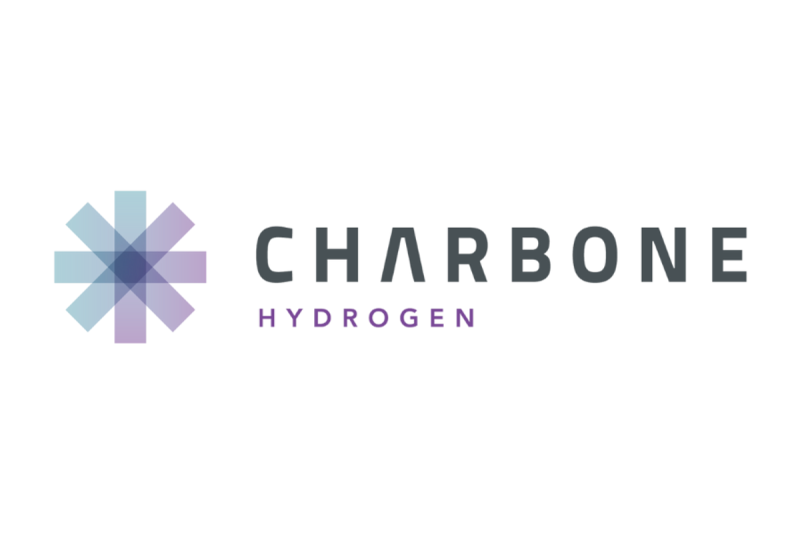
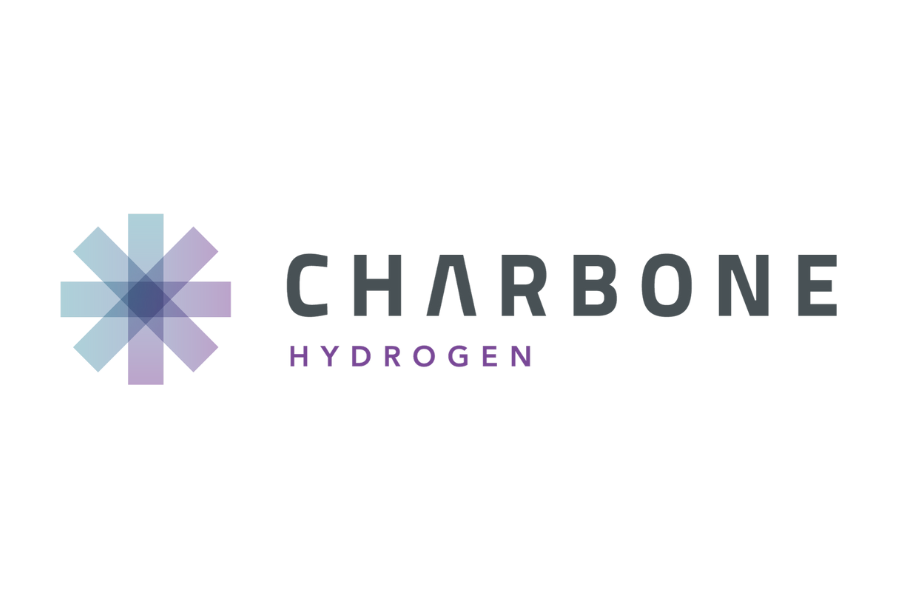
(TheNewswire)
 |
|||||||||
 |
 |
 |
|||||||
Brossard, Quebec TheNewswire – le 23 octobre 2025 CORPORATION CHARBONE (TSXV: CH,OTC:CHHYF; OTCQB: CHHYF; FSE: K47) (« CHARBONE » ou la « Société »), un producteur et distributeur nord-américain spécialisé dans l’hydrogène propre Ultra Haute Pureté (« UHP ») et les gaz industriels stratégiques, annonce la génération de revenus grâce à la première livraison de 161 000 pieds cubes d’hélium à un distributeur indépendant de la grande région de Toronto (Grand Toronto). Cette étape importante marque le lancement de la division Hélium de CHARBONE et son intégration dans la chaîne d’approvisionnement nord-américaine des gaz industriels spécialisés.
La livraison a été effectuée à l’aide d’une remorque à cylindres de type 1 nouvellement mise en service, dédiée à l’hélium, soulignant l’engagement de CHARBONE en matière de fiabilité logistique et de sécurité des approvisionnements de gaz à ultra haute pureté.
Parallèlement, CHARBONE a conclu un contrat d’approvisionnement de trois (3) ans avec le distributeur indépendant, garantissant un approvisionnement fiable de plusieurs millions de pieds cubes d’hélium sur le marché ontarien. Ce contrat constitue une étape stratégique dans la diversification de la gamme de produits de CHARBONE, qui comprend l’hydrogène, l’hélium et d’autres gaz à valeur ajoutée.
« Cette première livraison dans la région du Grand Toronto démontre la capacité de CHARBONE à se développer parallèlement à notre plateforme d’hydrogène et à répondre à la demande canadienne croissante en gaz de spécialité , » a déclaré Dave B. Gagnon, PDG de CHARBONE . « Notre objectif est de fournir une nouvelle alternative aux distributeurs indépendants partout au Canada . »
Selon les projections, le marché mondial de l’hélium devrait croître de 2 milliards USD entre 2024 et 2030 , soit un taux de croissance annuel moyen de 6,7 %.
À propos de CORPORATION CHARBONE
CHARBONE est une entreprise intégrée spécialisée dans l’hydrogène propre Ultra Haute Pureté (UHP) et la distribution stratégique de gaz industriels en Amérique du Nord et en Asie-Pacifique. Elle développe un réseau modulaire de production d’hydrogène vert tout en s’associant à des partenaires de l’industrie pour offrir de l’hélium et d’autres gaz spécialisés sans avoir à construire de nouvelles usines coûteuses. Cette stratégie disciplinée diversifie les revenus, réduit les risques et augmente sa flexibilité. Le groupe Charbone est coté en bourse en Amérique du Nord et en Europe sur la bourse de croissance TSX (TSXV: CH,OTC:CHHYF) ; sur les marchés OTC (OTCQB: CHHYF) ; et à la Bourse de Francfort (FSE: K47) . Pour plus d’informations, visiter www.charbone.com .
Énoncés prospectifs
Le présent communiqué de presse contient des énoncés qui constituent de « l’information prospective » au sens des lois canadiennes sur les valeurs mobilières (« déclarations prospectives »). Ces déclarations prospectives sont souvent identifiées par des mots tels que « a l’intention », « anticipe », « s’attend à », « croit », « planifie », « probable », ou des mots similaires. Les déclarations prospectives reflètent les attentes, estimations ou projections respectives de la direction de Charbone concernant les résultats ou événements futurs, sur la base des opinions, hypothèses et estimations considérées comme raisonnables par la direction à la date à laquelle les déclarations sont faites. Bien que Charbone estime que les attentes exprimées dans les déclarations prospectives sont raisonnables, les déclarations prospectives comportent des risques et des incertitudes, et il ne faut pas se fier indûment aux déclarations prospectives, car des facteurs inconnus ou imprévisibles pourraient faire en sorte que les résultats réels soient sensiblement différents de ceux exprimés dans les déclarations prospectives. Des risques et des incertitudes liés aux activités de Charbone peuvent avoir une incidence sur les déclarations prospectives. Ces risques, incertitudes et hypothèses comprennent, sans s’y limiter, ceux décrits à la rubrique « Facteurs de risque » dans la déclaration de changement à l’inscription de la Société datée du 31 mars 2022, qui peut être consultée sur SEDAR à l’adresse www.sedar.com; ils pourraient faire en sorte que les événements ou les résultats réels diffèrent sensiblement de ceux prévus dans les déclarations prospectives.
Sauf si les lois sur les valeurs mobilières applicables l’exigent, Charbone ne s’engage pas à mettre à jour ni à réviser les déclarations prospectives.
Ni la Bourse de croissance TSX ni son fournisseur de services de réglementation (tel que ce terme est défini dans les politiques de la Bourse de croissance TSX) n’acceptent de responsabilité quant à la pertinence ou à l’exactitude du présent communiqué.
Pour contacter Corporation Charbone :
|
Téléphone bureau: +1 450 678 7171 |
||
|
Courriel: ir@charbone.com Benoit Veilleux Chef de la direction financière et secrétaire corporatif |
Copyright (c) 2025 TheNewswire – All rights reserved.
News Provided by TheNewsWire via QuoteMedia